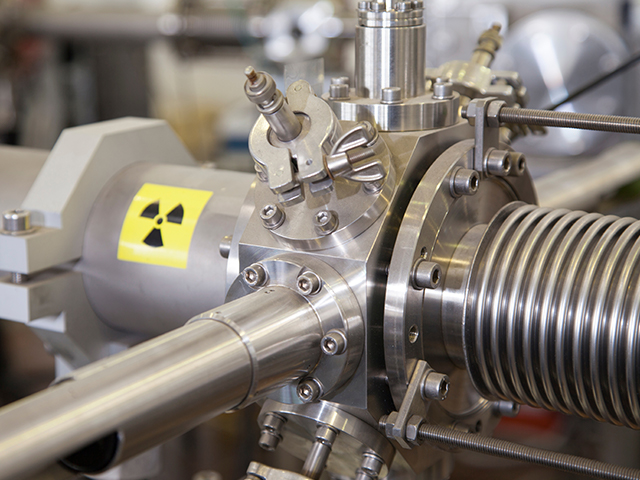Center for Plasma Science and Technology
The Center for Plasma Science and Technology (CePaST) is one of Florida A&M University's premier research centers specializing in plasma science and technology and many associated experimental, theoretical, and computational subdisciplines.
What We're All About
CePaST Laboratory Research Focus
Listed by Professor
Charles Weatherford, Ph.D.

Vice President of Sponsored Research
Director, CePaST
charles.weatherford@famu.edu
Theoretical and computational studies in:
• High Energy Density Physics and Chemistry
• Simulation of laser-plasma interactions
• Quantum control and machine learning
• Electron molecule, photon molecule interactions
• Bound states of molecules
• Computation of material properties for nano-sensors
• Energy storage and photonics
• Quantum information
Lewis Johnson, Ph.D.

Associate Provost for Student Success and Strategic Initiatives
Assistant Director, CePaST
lewis.johnson@famu.edu
Experimental plasma physics with emphasis on:
• High energy density laboratory plasmas
• Soft x-ray emission from microsecond x-pinches
• Axial jet formation characteristics with relevance to astrophysics
• Ultra-fast plasma diagnostics
Richard Appartaim, Ph.D.
Experimental plasma physics with emphasis on:
• High energy density laboratory plasmas
• Soft x-ray emission from microsecond x-pinches
• Axial jet formation characteristics with relevance to astrophysics
• Ultra-fast plasma diagnostics
Natalie Arnett, Ph.D.
The focus of our research group is to develop multifunctional polymer membranes for
various applications. The overall goal is to design polymers with tunable properties
and characterize their structure-property relationships using a variety of methods.
The significance of this approach is that polymers with precisely tailored performance
can be prepared by tuning the microstructure of the copolymer backbone using varying
and distinct structural/functional features.
Current areas of interest in the APRL include:
• Fuel Cells –this research is focused on improving the properties of poly(arylene ether sulfone) polymers and membranes for proton exchange membrane fuels using phosphonate and sulfonated additives along with triazine based monomers. Published research with phosphonate additives shows increases in the water performance properties of BPSH-35 copolymer. Direct insertion of a methoxy triazine derivative (DCMT) demonstrated hydrolysis during Method 2 acidification.
• Water Purification –The long-term goal of this project is to synthesize a polyester polyamide thin-film composite (TFC) membrane with an active layer that enhances current reverse osmosis (RO) TFC membrane water flux (52 LMH) and salt rejection (99.6%). Past research from the APRL lab with an amino based monomer demonstrated considerably higher values than the industrial standard at higher concentration of the monomer.
• Biopolymers –The goal of this research is to develop poly(xylitol sebacate) (PXS) nanoparticles for drug delivery. Various reaction times and the effect on nanoparticle formation was investigated. To date PXS nanoparticles have been formed via a nanoprecipitation method. SEM and DLS-hydrodynamic size confirmed the average diameter of the unloaded and curcumin loaded PXS-MP-15H nanoparticles to be 262 nm and 352 nm, respectively. DLS-zeta potential for the unloaded and loaded nanopartilce were -15.7mV and -0.159mV, respectively.
• MXenes – the focus of this research is to develop novel etch methods based on utilizing elemental halogen/non-fluorine based etching procedures in oxygen-free non-aqueous solvents for removal of the “A” layer to further development and mass produce MXenes for commercial applications. Our research will focus on the synthesis and theoretical assessment of Ti3C2Tx MXenes physical and chemical properties with controlled and homogenous surface functionality.
Kalayu Belay, Ph.D.

• Mechanical characterization of carbon nanotube (CNT) yarns
• Electrical characterization CNT yarns
• Investigating piezoresistive response of CNT yarns
• Detection of damage in composite materials using CNT yarns
• Stain measurement using CNT yarns
Dawn Lewis, Ph.D.
Elemental analysis of environmental samples using laser induced breakdown spectroscopy (LIBS). Presently our focus is the elemental analysis of samples of petrified wood for Colorado.
Ephrem Mezonlin, Ph.D.
• Experimental Physics
• High density plasmas studies on Fusion devices
• Compact Neutral Particle Analyzer for measurements ion temperature measurements on
MST
• New diagnostics for electron and ion temperature on STPX
• Search for renewal sources of energ
Bidhan Saha, Ph.D.
Chair of Physics Department
Theoretical and Computational Atomic and Molecular Physics studies:
• Electron and positron impact Elastic and Inelastic collisions
• Charge exchange phenomena involving Atoms,
• Molecules and Solids
• Resonance and Virtual states
• e - molecule scattering including rotational and vibrational states
• 3-body breakup processes
Carol Scarlett, Ph.D.
Studying nuclear and particle physics experimentally to uncover explanations for currently
observed phenomena such as Dark Matter, Dark Energy and evidence for matter-antimatter
asymmetries.
Of Interest:
• Experimental searches for Dark Matter Candidates (e.g. axion particles)
• Cross sectional measurements of positron-neutron beta decays
• Materials that lead to random walking through birefringent interactions
• Quantum Computing
Experimental Techniques:
• Development of Gas Electron Multiplier (GEM) detectors
• Mirror Cavity amplification of optical effects
• High Powered Laser production of Antimatter
• Birefringence of materials for use in computing components
Komalavalli Thirunavukkuarasu, Ph.D.

Probing interplay of spin, charge, lattice and orbital degrees of freedom in functional
materials under extreme conditions such as high magnetic field, high pressure and
low temperatures using spectroscopy
Materials of interest:
• Nano-materials
• Molecular magnets
• Multiferroics
• Correlated electron systems
• Energy materials
Experimental Techniques employed:
• Raman scattering and photoluminescence
• Broadband infrared spectroscopy
• THz spectroscopy
• Multi-frequency Electron Paramagnetic Resonance
Ronald Williams, Ph.D.








